|
Tools
Beading
Crimping pliers are for just what their name implies, crimping! The back slot puts a seam in the middle of the crimp tube, separating the ends of the flex wire and trapping it firmly. The front slot rounds out the tube and turns it into a small, tidy bead. |
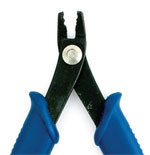 |
Chain-nose pliers are the most useful tool in your entire toolbox. For holding, opening and closing jump rings and bending sharp angles. |
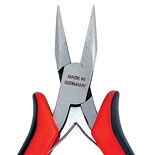 |
Round-nose pliers are intended for turning round loops. They do not work well for holding or grasping since they tend to leave a small dent. |
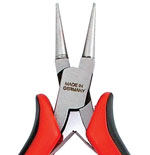 |
Flat-nose pliers are a wire power tool. They are excellent for turning sharp corners, holding items and for opening and closing jump rings. |
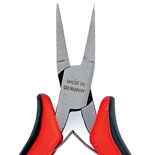 |
Wire flush cutters leave one flat side and one pointed side on each cut. Using flush cutters is especially important when working with heavy gauges of wire (20-gauge or smaller). One side of the cutter is flat and the other is indented. |
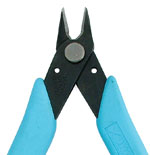 |
Nylon-jaw pliers can be used to harden or straighten wire. |
 |
Side-Cutting Pliers The angled jaws of the side-cutting pliers give a close cut. |
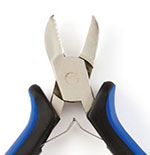 |
Jeweler’s hammers have fine, smooth curved heads to leave a clean impression. The round peen side works well for texturing wire and metal sheet. |
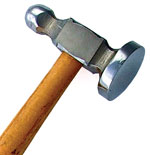 |
A bench block is a flat, smooth piece of hardened steel. Hammering on top of a block flattens out and hardens the wire. Bench blocks are also used for stamping metal to get a clean impression. |
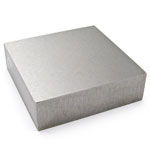 |
|
|
|
|